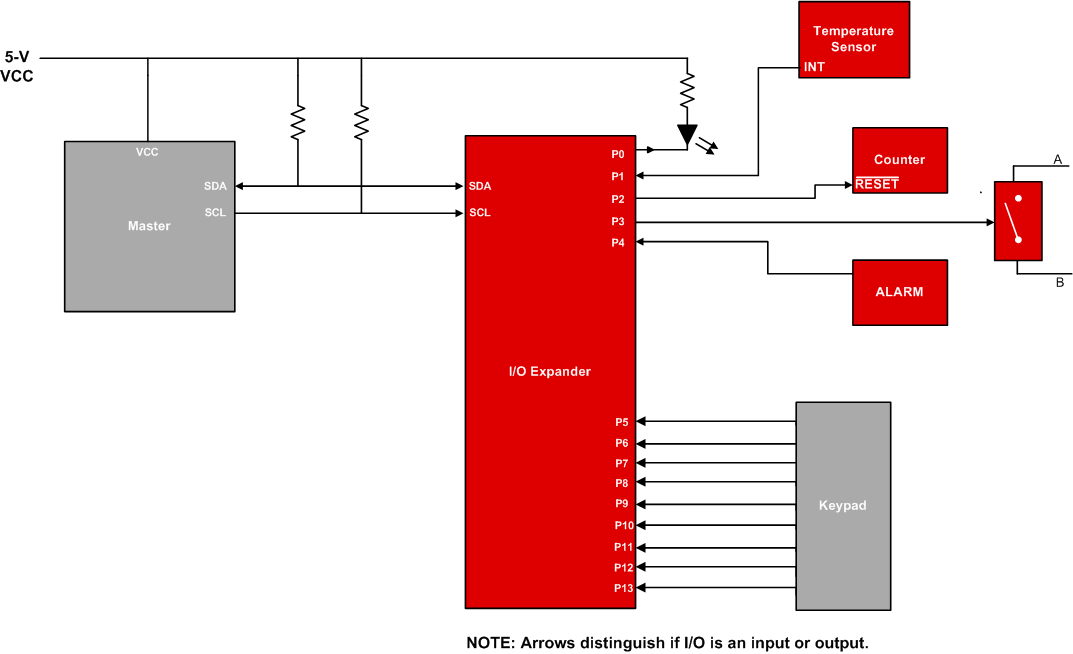SLVA787 September 2016 LM8330 , LM8335 , P82B715 , P82B96 , PCA9306 , PCA9306-Q1 , PCA9515A , PCA9515B , PCA9518 , PCA9534 , PCA9534A , PCA9535 , PCA9536 , PCA9538 , PCA9539 , PCA9543A , PCA9544A , PCA9545A , PCA9546A , PCA9548A , PCA9554 , PCA9554A , PCA9555 , PCA9557 , PCF8574 , PCF8574A , PCF8575 , PCF8575C , TCA4311A , TCA6408A , TCA6416A , TCA6418E , TCA6424A , TCA9509 , TCA9517 , TCA9517A , TCA9534 , TCA9534A , TCA9535 , TCA9538 , TCA9539 , TCA9539-Q1 , TCA9543A , TCA9544A , TCA9545A , TCA9546A , TCA9548A , TCA9554 , TCA9554A , TCA9555 , TCA9617A , TCA9617B , TCA9800 , TCA9801 , TCA9802 , TCA9803
2 I/O Expander Applications
I2C I/O expanders are devices used when there is a lack of inputs and outputs on a processor or controller. TI offers a wide variety of I2C-controlled I/O expanders ranging from 4-bit devices to 24-bit devices.
A common issue in applications involving microcontrollers and microprocessors involves the need for additional inputs and outputs. As inputs and outputs are needed more in applications to enable devices, monitor interrupts, and toggle resets, I/Os are beginning to be seen as a premium in master devices. However, with the development of I/O expanders, TI is creating the potential for cost-savings in applications that do not need higher end processors with extra GPIOs. For example, an application using the MSP430G22230, a microcontroller with 4 available GPIOs, could be paired with the TCA9555 GPIO expander in order to have 16 extra GPIOs available to support all application requirements.
 Figure 2. Microcontroller or Processor Using I/O Expander to Control Peripherals
Figure 2. Microcontroller or Processor Using I/O Expander to Control Peripherals The use of I/O expanders in an application can range from controlling or enabling switches, enabling other devices within a system (that is, DC/DC with an EN pin), resetting other devices via RESET pin, or even monitoring status outputs (see Figure 2). TI offers a wide variety of I/O expanders in its portfolio; however, narrowing down the I/O expander that best fits an application need can be confusing, based on the features that each I/O expander has.
Designing systems with I/O expanders allows for more control when there is a lack of input and output pins provided on a processor. TI offers I/O expanders with added features, such as extra address pins for several unique slave addresses, reset pins, and internal pull-ups.